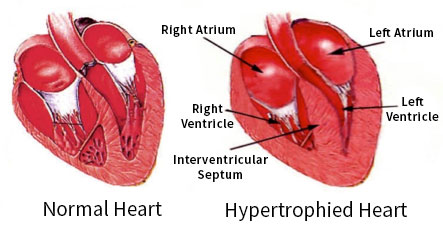NIH - More Frequent Hemodialysis (FHN) Studies in a Nutshell
Is more frequent or longer HD really better than three times per week? Or, are people who choose these treatments themselves different in some way? This question was the focus of a pair of studies funded by the National Institutes of Health (NIH) that began in January, 2006. And now we have some answers!
Short Daily HD Studyi
One 12-month study randomly assigned people (like a coin flip) to:
- Short daily in-center HD
- (5-6 days per week, 1.5 to 2.75 hours) – 125 people
- Standard in-center HD
- (3 times a week, 2.5-4 hours) – 120 people
At the start and end of the study, researchers looked at patients' heart size and shape. MRI was used to measure the heart's main pumping chamber, the left ventricle. An overgrown, too-thick chamber, called left ventricular hypertrophy (LVH) is a leading cause of death on dialysis.

Those in the study also filled out a survey that asked about their physical function. These scores predict rates of hospital stays and survival on dialysis.
Other areas were also looked at, such as:
- Blood pressure
- Cognitive function
- Nutrition
- Mental health
- Bone minerals
- Anemia
- Blood pressure
- Hospitalization
- Death
The two groups did not differ significantly by:
- Age
- Race
- Gender
- Weight
- Cause of kidney failure
- How long they had kidney failure
- Illness other than kidney failure,
- How much kidney function they had left
- Blood pressure
- Treatment dose
- Type of access
Of those who were assigned to short daily HD, 78% did at least 80% of the treatments.
Short Daily Study Results
Here are the significant findings after 12 months of the study:
| Short Daily HD | Standard HD | |
|---|---|---|
| Left ventricular mass | 16.4±2.9 grams smaller | 2.6±3.2 grams smaller |
| Physical function | 3.4±0.8 points higher | 0.2±0.8 points higher |
| Weekly average systolic (top #) BP | Down 9.2±1.5 points | Down 0.9±1.6 points |
| Predialysis phosphorus | Down .64±0.14 | Down 0.08±0.14 |
What does all of this mean? Compared to those who did standard HD, people who did short daily HD:
- Had healthier hearts
- Felt better physically
- Had lower blood pressure and phosphorus
The researchers decided before the study started that healthier hearts and better physical functioning were the key study endpoints. This means that the short daily study was a huge success.
It is also worth noting that there were more access procedures in the short daily group—though not more access failures. Since this study was done in-center, chances are that many different staff were putting in needles or using the HD catheters. In general, the fewer people who touch an access, the longer it can last.
It is also not likely that short daily treatments will be offered in-center outside of a study. The researchers wanted to see the impact of short daily treatments without confusing the issue by having home vs. in-center. In practice, short daily treatments
Nocturnal HD Study
The second 12-month study randomly assigned people to:
- Nocturnal HD
- (6 nights per week, 6+ hours per treatment) – 45 people
- Standard hom e HD
- (3 times a week) – 42 people
Since this study was much smaller (just 87 people), the results did not reach significance—but they were all in the expected direction.
References:
- The FHN Trial Group. In-center hemodialysis six times per week vs.three times per week. N Engl J Med. 2010. Nov. ePub ahead of print. http://www.nejm.org/doi/full/10.1056/NEJMoa1001593

